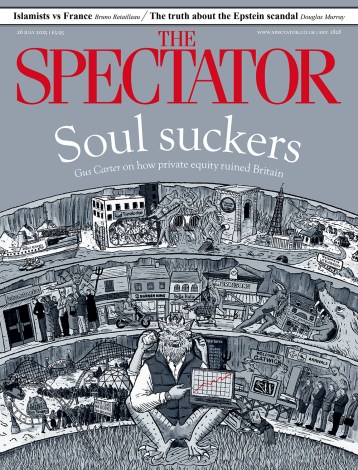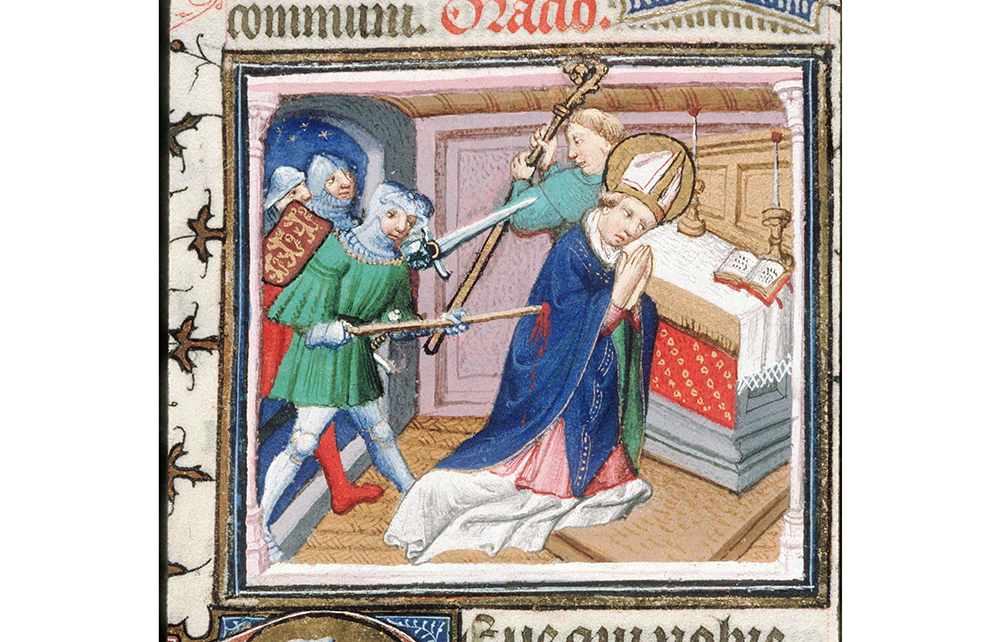The St Brice’s Day Massacre? I must admit I hadn’t heard of this ‘most just extermination’ of Danes in Oxford at the instigation of King Aethelred the Unready in 1002, perhaps because the teaching of history in this country tends to kick off in 1066. You certainly don’t think of Oxford as a place that pioneered techniques of ethnic cleansing.
Crypt is a collection of seven essays that unearth details about how certain people lived and died in the past. If you didn’t already know Alice Roberts’s background as an anatomist and biological anthropologist, you’d have a good chance of deducing it from this book. The old jibe that archaeology is about ‘stones and bones’ holds true; but bones have pulled ahead in recent decades, as new scientific techniques can now extract a wealth of information from previously uncooperative skeletons.
The old jibe that archaeology is about stones and bones holds true; but bones have pulled ahead recently
Roberts focuses on the discovery in 2008 of at least 35 skeletons ‘slung into a mass grave’ beneath St John’s College, Oxford. They are mostly those of young men who met a brutal death. The scientific examination is fascinating, but ultimately resolves nothing – as is often the case with Roberts’s other investigations. The dead may well have been Danes butchered on St Brice’s Day, but we cannot be sure.
Sainthood, leprosy, Paget’s Disease, the Black Death, the drowned archers of the Mary Rose and anchoresses are all given thoughtful scrutiny, and Roberts’s reflections on Thomas Becket and Canterbury cathedral are especially entertaining. It was a pity that Henry II, who probably had the services of a top-drawer jester like Roland the Farter, couldn’t have relaxed to the extent of fashioning a modus vivendi with Becket. The conflict between the king and the archbishop backed by Rome has a hint of Brexit and the EU. Nevertheless, I hadn’t realised how much Becket was cruising for a bruising.
I was also unaware of just how monstrous the cult of St Thomas soon became. Although Chaucer reminds us of the cultural and religious power that Canterbury wielded, it’s a section from one of Erasmus’s Colloquies, quoted by Roberts, that truly illustrates how shamelessly the place would succumb to bling and pilgrim-fleecing. The piece was intended as a lampoon, but it was backed up by other less facetious accounts. Erasmus proposed that the vast wealth on display at the cathedral could be better used to alleviate the lives of the poor. There was also an obvious drawback to putting jewels on display. It’s a little surprising that we had to get through five more Henrys before Henry VIII (who was having his own frustrations with Rome wanting to ‘dip its beak’ into the cathedral revenues) helped himself to the goodies and ‘disappeared’ St Thomas and his bones.

Religion played a central role in everyday life in the Middle Ages, partly because prayer was your only hope if you got ill. Roberts’s last case involves an anchoress, probably Lady Isabella Germann, from York, who took reclusiveness to an extreme in the mid-15th century. Anchoresses were typically walled up in a part of a church and acted as holy consultants who could dispense wisdom and prophecy to the locals. Their way of living was essentially a slow-motion form of martyrdom.
The intriguing finding from the presumed bones of Lady Isabella is that she had suffered from advanced syphilis. This ushers in a learned discourse about the origins of the ‘French disease’ and the old debate as to whether Christopher Columbus and his boys brought it back from their travels in the New World. Being a ‘great imitator’, syphilis is hard to track in medical records since its symptoms are so similar to other ailments. The result of all the recent lab work? We have more information, but no cigar. ‘The Columbian hypothesis is a massive oversimplification.’
Roberts is professor of public engagement in science at Birmingham University. Some readers may find engaging with the huge dollops of science here, however lucidly explained, a little onerous; but overall the book is fascinating, and you certainly get your money’s worth.






Comments